
They say that one man’s trash is another’s treasure, and there’s no better place where this statement comes true than on an episode of the Antiques Roadshow. The show that touts itself as “part treasure hunt, part history, and part adventure” has uncovered treasures and revealed fascinating truths about flea market finds and family heirlooms.
The tale of a lion statue started in a similar way when a New Mexico woman figured that she should get one appraised. The statue in question had been in her family for years, and she just wanted to find out if there was anything special about it. The marble-made statue would turn out to hold special significance, and it took one glimpse from the appraiser to unravel its mystery.
A Mysterious Statue Debuts On The Antiques Roadshow
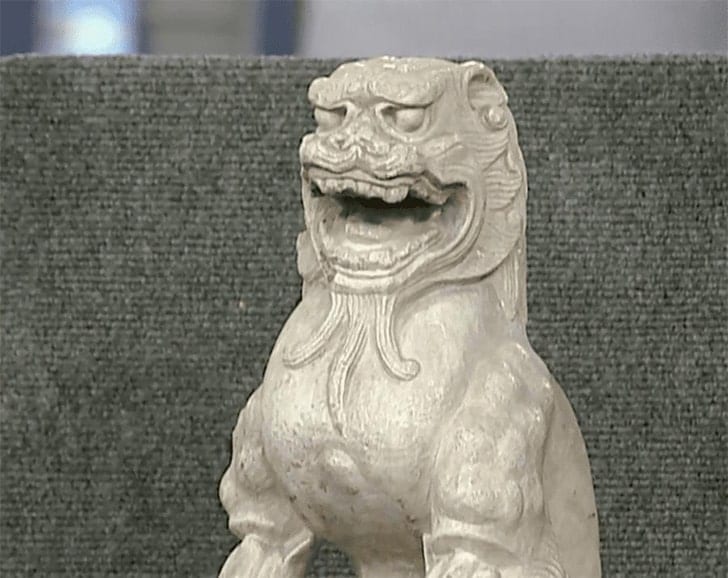
On an episode of the Antiques Roadshow aired in 2002, a mysterious Lion statue made its way under the spotlight. It started like any other episode of the show where regular folks have the value of their trinkets assessed. Lark E. Mason, the show’s presenter, wasn’t prepared for the extraordinary find brought in for appraisal.
It left him speechless for a moment, and soon after, he assessed it instantly. The woman who had brought it in didn’t have a clue about its origins except for her grandparents getting it on a trip to China. The woman would eventually inherit the Lion statue, and it wasn’t until that moment that she discovered its true value.
Revisiting The Past
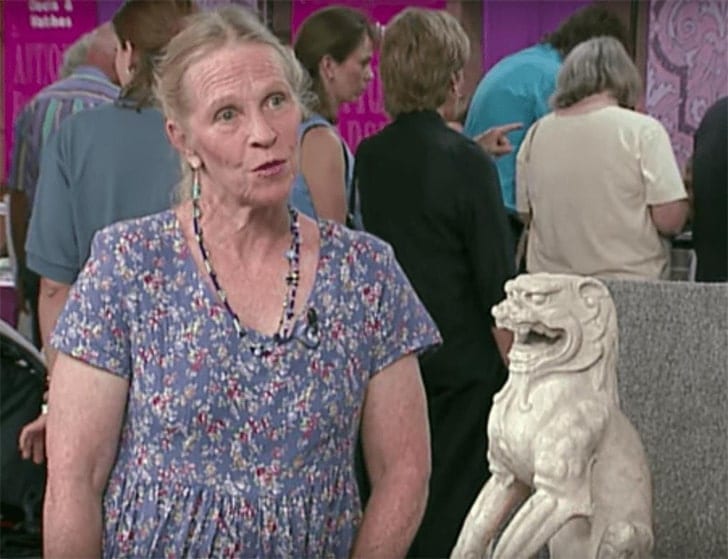
The lady in question had dim memories about how the Lion statue ended up in her family’s possession. She could only provide vague details, recalling that her grandparents were frequent travelers to China. The feature didn’t go unnoticed, and it piqued Mason’s interest.
Mason wanted her to provide him with more specific details about when her grandparents had traveled to China. The woman couldn’t offer precise information about their travels, but she knew that it was definitely around the early part of the 20th century. She also thought that it must have been the time when they came about the statue.
Three Generations Connected By A Lion Statue

Much like most heirlooms, the Lion statue connected three generations of the woman’s family. After her grandparents got it in China, her mother had possession of the statue before passing it down to her.
The statue was the one item they had held onto throughout the years, and that was why despite not knowing it’s intrinsic value, it still holds special meaning to them. The woman wouldn’t have imagined the extent of its actual significance.
A Passion For Antiquities
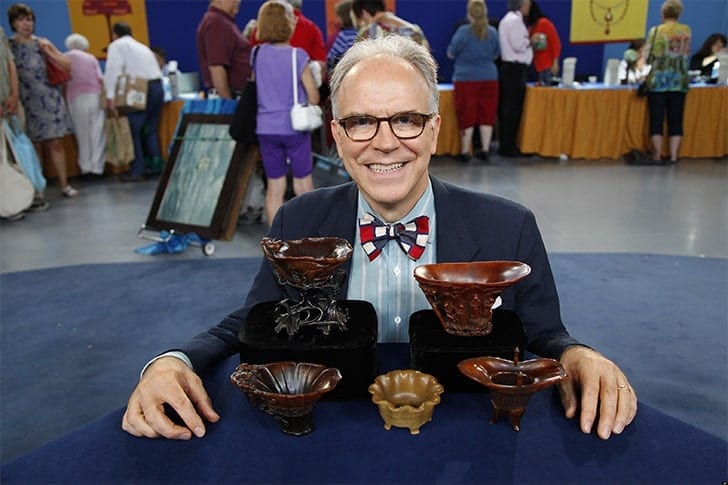
If there was any man who could unravel the mystery behind the origins and value of the statue, it was Mason. He has extensive experience working with antiquities going back to when he was ten years old and raiding local auctions.
Mason was previously the Senior Vice President at Sotheby's Chinese Works of Art Department. In 2003, he left it all behind to establish iGavelauctions.com, but he kept his position at New York University as an Adjunct Professor.
Expertise In Action
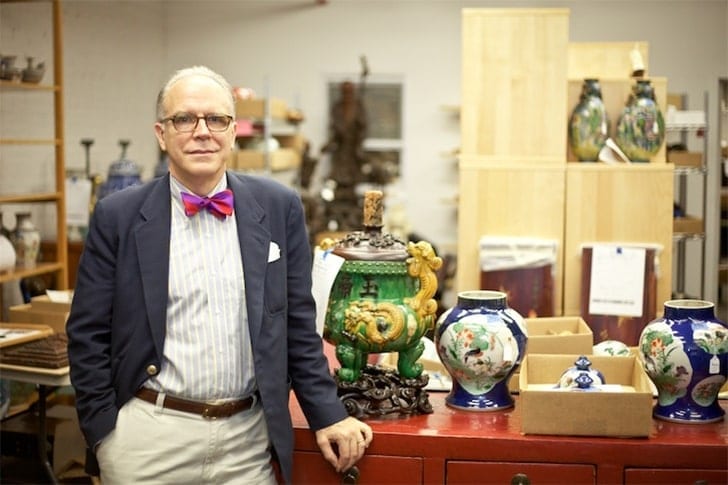
Mason has lent his expertise to several publications, including working on translations of two major Chinese furniture works. He also serves as a translator for Tian Jiaqing’s Qing Dynasty Classic Chinese Furniture and Wang Shi-Xiang’s Connoisseurship of Chinese Furniture.
He formerly served as the Margaret and Trammell Crow Collection of Asian Art’s consulting curator. Mason sits on the board of the New York-based Metropolitan Historic Structures Association. He is also a University of Tennessee, Knoxville emeritus board member.
Dealing With Delicate Antiques

Most antique pieces are delicate items, but their true value is contained through their rich histories. Even the ordinary-looking pieces might prove highly valuable just based on its lineage. That describes the premise of the PBS program, Antiques Roadshow.
People stumble onto ordinary objects stashed in their garages or attics, and curiosity often strikes. Mason has helped assess the value of such pieces on the show, including the one time he identified a rare 18th-century porcelain collection.
Overcome With Emotion
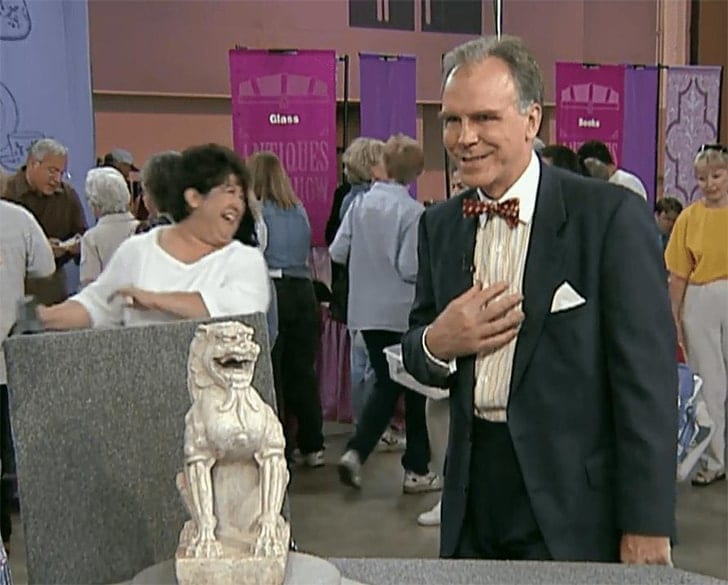
For a man who is known for his knowledge of antiquities and equally respected for his contributions to the field of antiques, Mason became genuinely emotional. Handling the statue had awakened in him a feeling that he had never experienced before.
He couldn’t help but start trembling, which was completely out of character for him. Mason was known for maintaining a professional stance throughout, and what he was experiencing at that moment was beyond his control.
Striking Gold
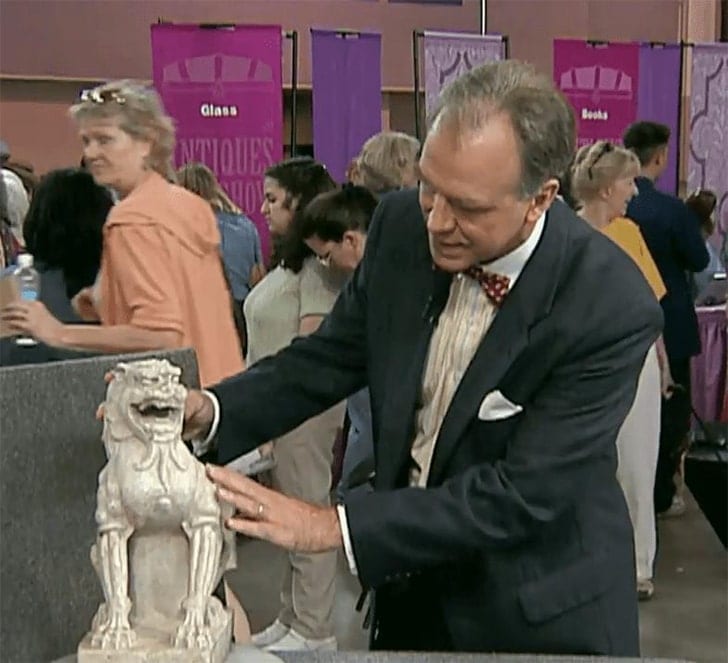
Mason has handled truly exceptional pieces in the line of duty, but he is still awed by the seemingly ordinary finds that turn up on the show. The Lion statue was such an item, and at first sight, Mason couldn’t help trembling when the realization of its true value hit him.
Mason was known for being a calm and composed person until the moment he unveiled the statue. It was a first for him to get emotional while filming, and he had to collect himself and get on with the show.
A Piece To Marvel About
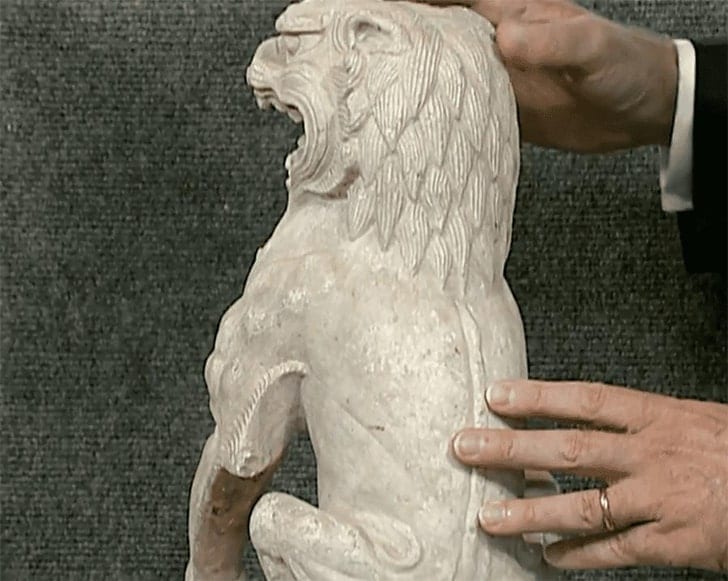
Once Mason had regained his composure, he got back to assessing the Lion statue in front of him. He appreciated its design and the skillful craftsmanship that went into carving the work of art.
Mason even admitted that he had a difficult time containing his excitement as he continued inspecting the statue. He knew that it was one of the most exceptional pieces of Chinese art that he had seen during his time on the show.
Playing Dress Up With Leo
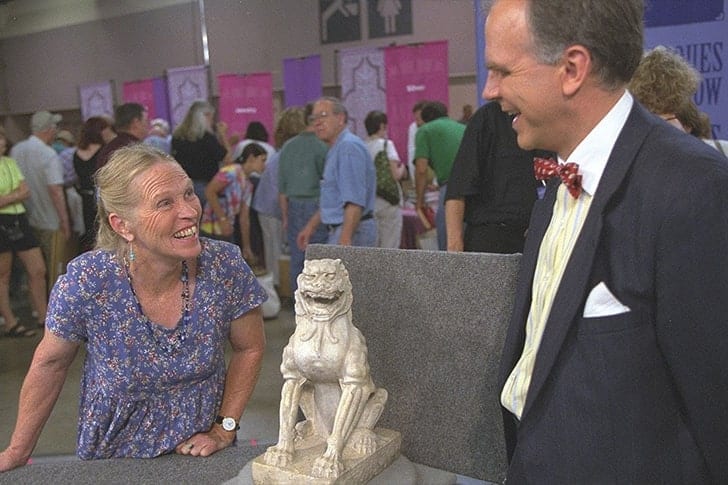
While Mason couldn’t hold back his enthusiasm as he kept examining the statue, the woman who had brought it in didn’t share the same sentiments. In her eyes, it was simply a statue that had been part of her family for long.
The woman had memories of calling it Leo, and alongside her brother, as kids, they would play dress-up with the statue. To them, Leo the Lion was simply another toy they could play with around the house.
A Unique Piece
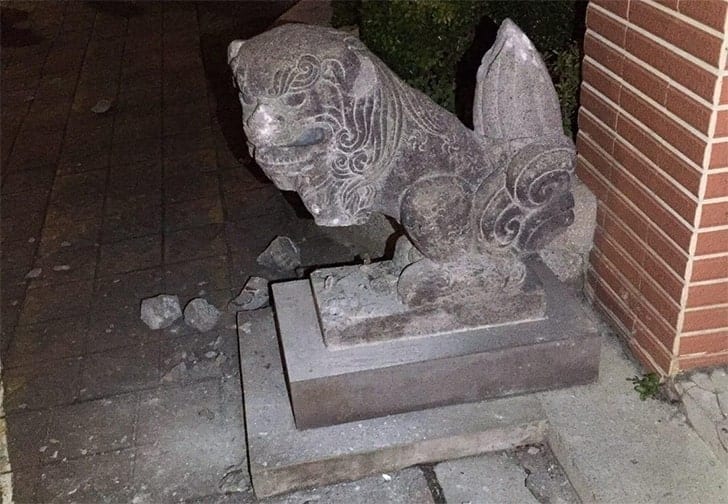
The woman and her family might have treated the work of art differently if they had known that it was a truly unique piece. Mason could tell that the carver who worked on the marble statue was exceptionally brilliant.
The well-executed details, like the rippling muscles visible from the surface, made the statue even more magnificent. Mason concluded that the artist who worked on the piece was an expert in creating similar types of art forms.
Almost Unscathed
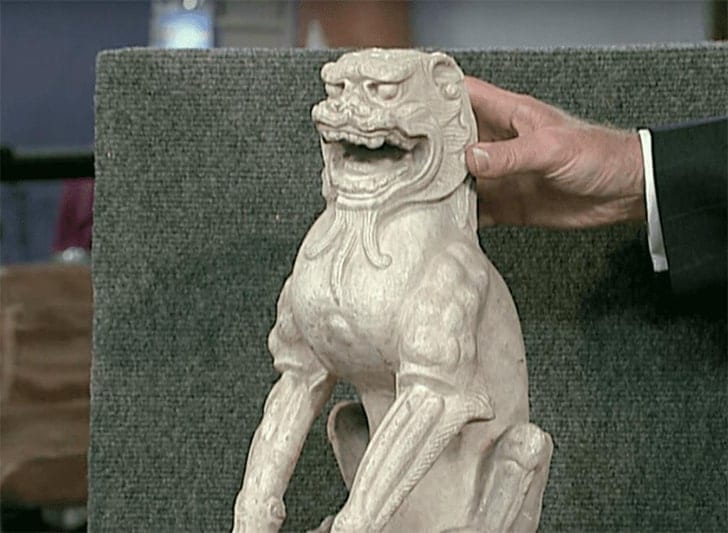
Another aspect that was hard to miss when examining the statue was the fact that it was almost unscathed. That made it even stand out more because it seemed to have held its original structure and shape over the years.
Mason said that he was impressed by the fact that every angle of the statue was simply breath-taking. He explained that each part of the statue held significant importance, and that’s what made it more memorable than other pieces on the show.
A Familiar Sight
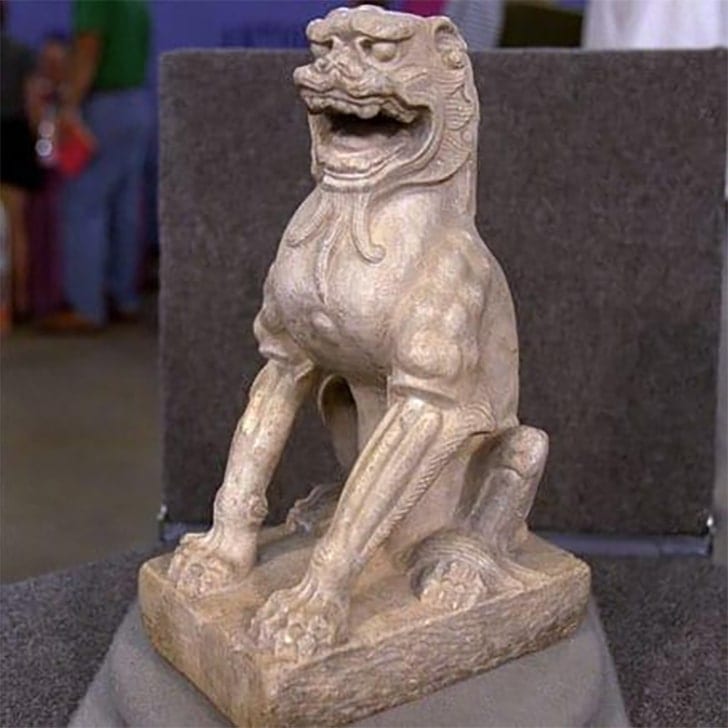
Antique enthusiasts have argued that lion statues are some of the most replicated pieces globally. Therefore, it’s difficult to tell whether this specific piece was one-of-a-kind or just a good replica of a similar one they have encountered before.
Mason had also come across several similar statues that were smaller in size. This specific one still struck him as a majestic piece starting from its markedly larger size than the ones he had seen before.
The Significance Of Lion Statues
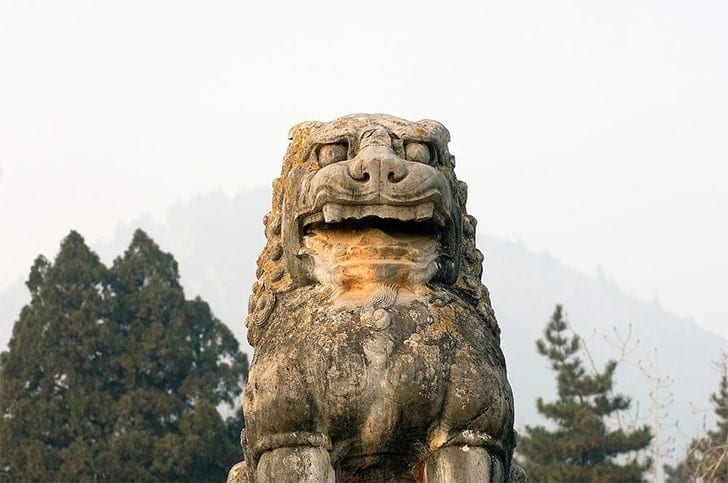
Artists have depicted lions in various forms for millennia, making them one of the most popular motifs displayed across the world. Venice adopted a winged lion as the city’s official symbol, and we’ve seen them included in a massive number of paintings.
In the western world, Lion statues are viewed as guardians, and that’s why they are popular choices for front porches. Stone-carved lion statues are a part of traditional Chinese architecture, and they are seen on just about every building around the country. In China, the lion represents luck and safety.
Lion Statues In Museums
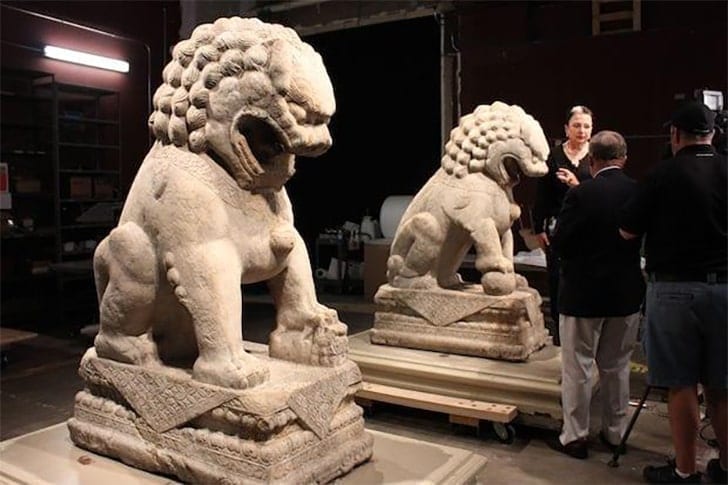
Lion statues also have a long history of serving as tomb monument guardians. One such piece is the “Marble statue of a lion,” dating back to the classical period. The greek statue is currently at the Met Museum.
Several other similar statues can be seen in museums around the globe, like The Lion of Knidos, which is currently at The British Museum. Mason believed that the particular statue was something that might have ended up displayed at a museum, and that made it even more intriguing.
No Distinguishing Signatures
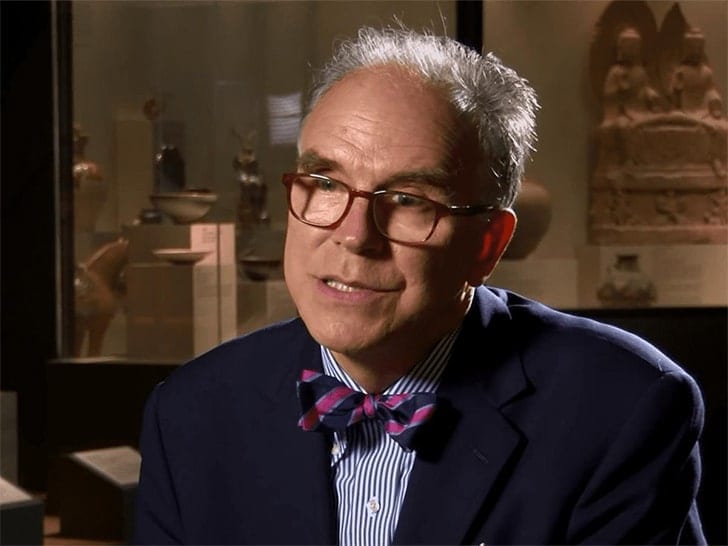
Like any other work of art, statues typically have an inscription of signature that can help identify its origins. Usually, the artist will indicate their name on the piece, accompanied by its year of creation.
The statue Mason had at hand didn’t include any distinguishable signature, which was quite odd. It also didn’t have any inscriptions that could, in any way, help trace its lineage. Mason only had the design as a point of reference when trying to assess its roots.
A Possible Connection To The Ming Dynasty
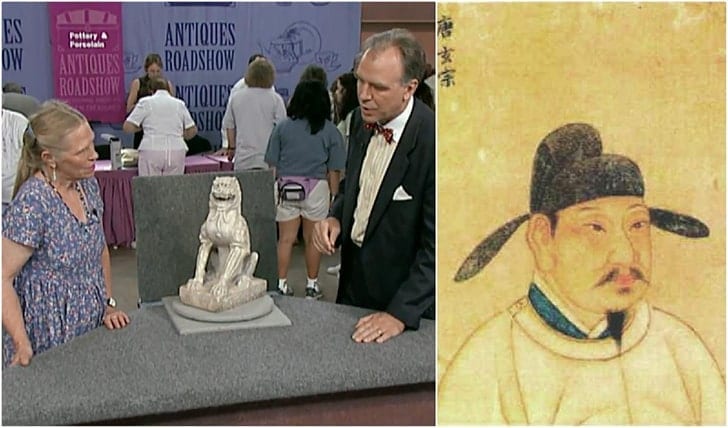
It wasn’t the first time that the woman who had presented the statue for assessment heard that it might hold significant value. A family friend had suggested that it could have a connection to a Chinese dynasty.
The woman’s friend had some knowledge about Chinese craftwork, and they believed that it was valuable. The friend suggested that it could have ties with the Ming Dynasty. Mason thought otherwise, but he did agree that it had links to a Chinese dynasty.
Tang Dynasty Art
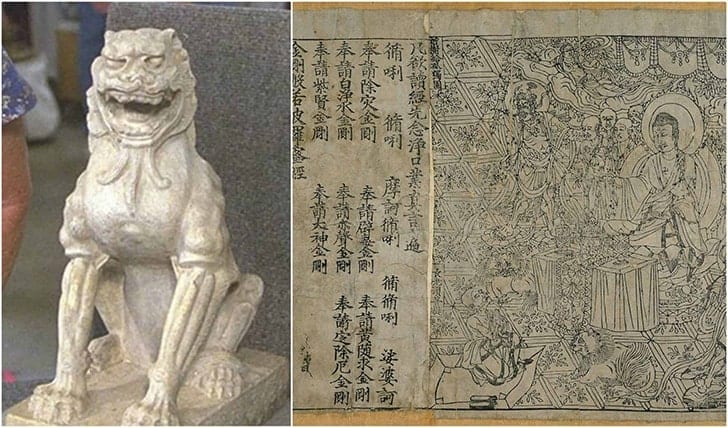
Mason was sure that the statue had its roots from the golden period of art in China, which was the Tang Dynasty. The period ran between the sixth and ninth centuries, and it represented a time when art flourished in China.
The literature, music, dance, and paintings produced at this time were simply remarkable. Lion sculptures and statues were also produced in droves, and the lion symbol was a significant element included in most paintings created back then.
A Global Impact
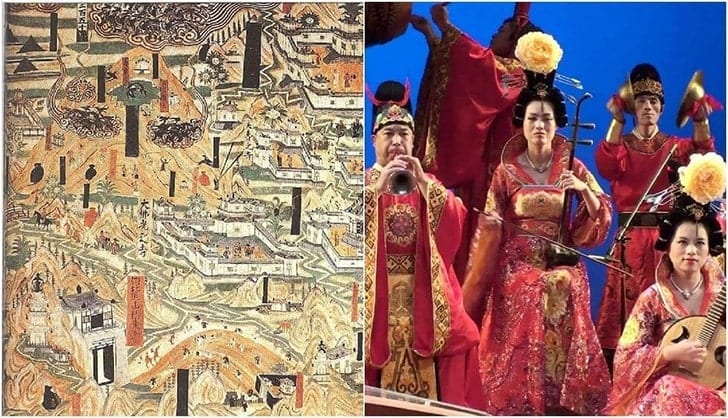
The Tang Dynasty made an impact globally with the various art forms produced in China traveling around the world. The art produced during this period were initially popular exports bound to the Middle East and India.
As more people were drawn to China and visited the Asian nation, they couldn’t resist going back home with souvenirs. It explains how the woman’s grandparents came about the lion statue and took it with them back home to New Mexico.
A Cornucopia Of Fascinating Art
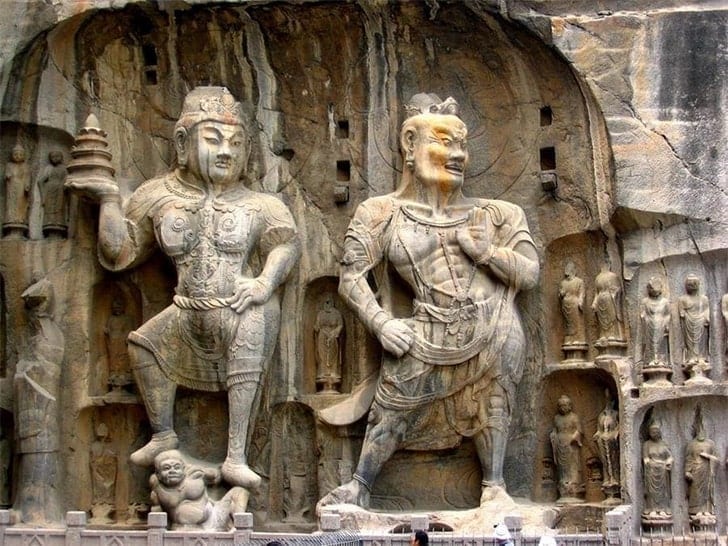
The lion statues weren’t the only carvings that stood out from the Tang Dynasty. The period was a time when Buddhism also thrived as the country’s most popular religion. In turn, plenty of Buddha statues were produced at the time.
The statues varied in terms of design, size, and they also contributed to the architecture of several buildings in China. The art form was also extremely marketable thanks to the popularity of China’s Buddhist monasteries.
UNESCO World Heritage Protection
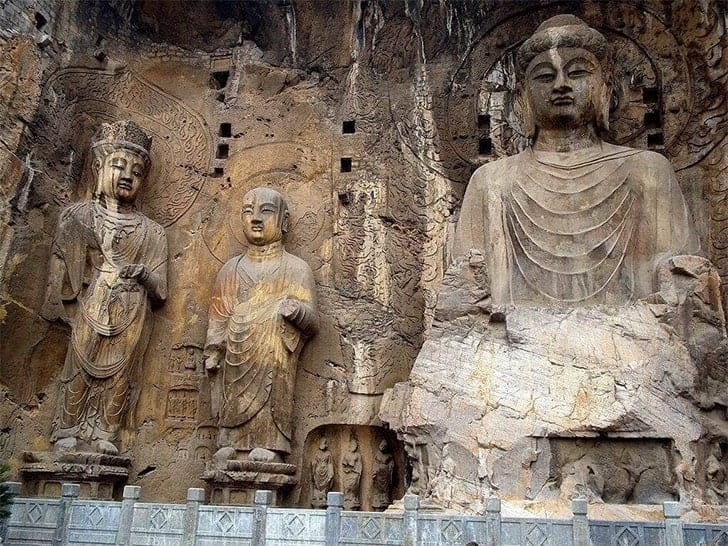
Beyond producing some of the most coveted and treasured structures, the Tang Dynasty’s art pieces also enriched the country’s culture significantly. The Longmen Grottoes, which features faces etched on the limestone cliff was granted the UNESCO World Heritage Status.
The carvings have always been considered as some of the most outstanding human-produced renderings of artistic creativity. They are revered for the masterful detailing that went into the carving process as well as their sheer magnificence.
The Fine Art Of Pottery
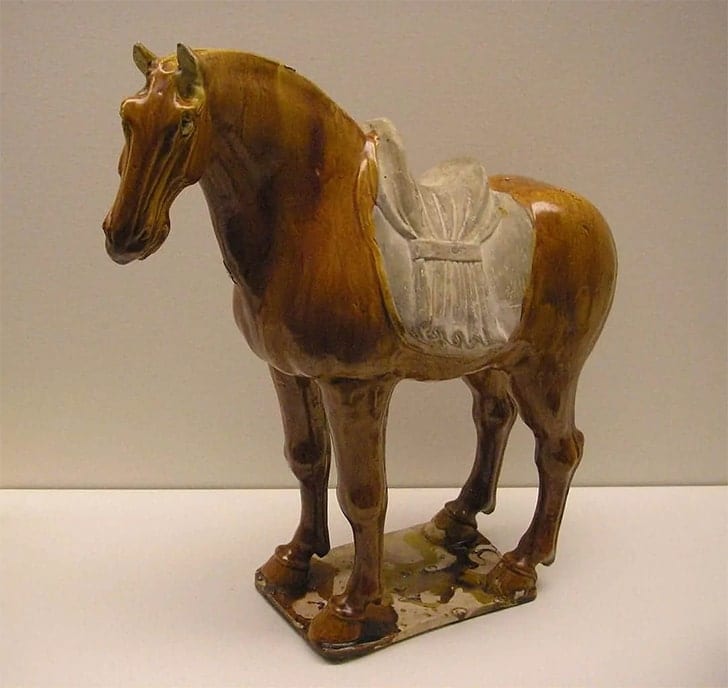
It shouldn't come as a surprise that the Tang Dynasty also produced some of the finest pottery the world has seen. The people were skilled at also producing three-dimensional sculptures. They would carve earthenware pieces and coat them with a glaze finishing.
These particular pieces were popular “gifts” placed at the tombs of important individuals, including empire rulers. The use of porcelain material was also on the rise during the era, and it paved the way to the creation of more intricate sculptures.
Splashed On The Headlines
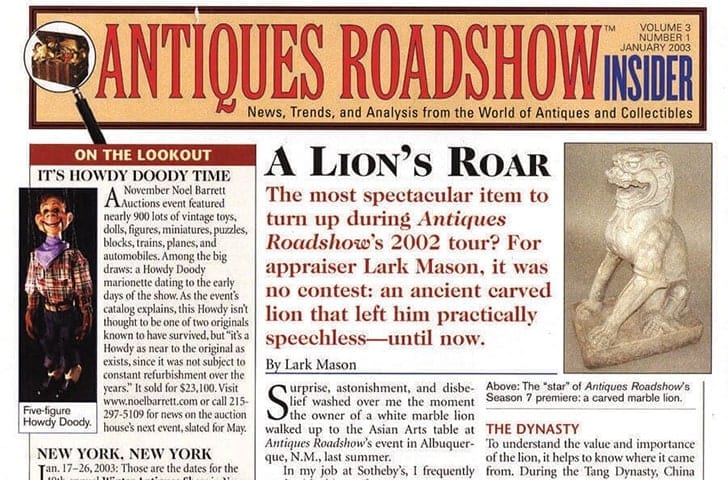
The increased use of porcelain to fashion sculptured was followed by a natural progression to create marble statues like the one that ended up at the Antiques Roadshow. The unique piece made the headlines, and the Antiques Roadshow Insider site ran an article about the great find.
Larry Canale, the site’s editor-in-chief, described the lion statue as the show’s most important antiques. His statement wasn’t regarding its value because the show had previously displayed another antique that fetched much more.
The $500K Blanket
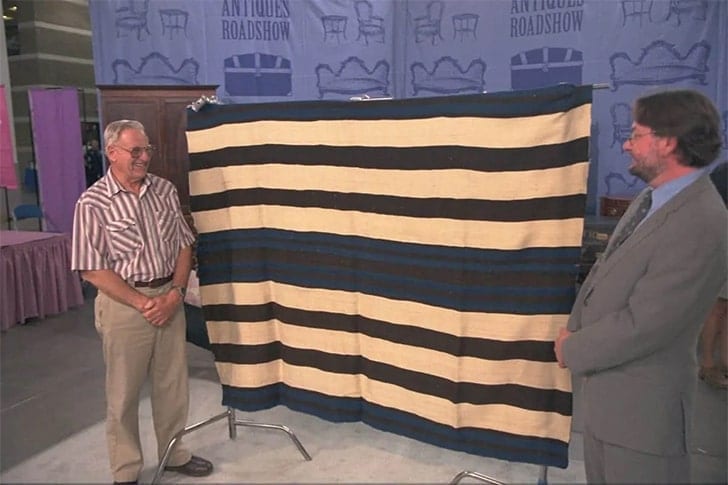
The Antiques Roadshow once hosted a guest who brought in a blanket for appraisal. It had belonged to his grandmother’s foster father, who turned out to be Kit Carson, a frontiersman. The appraiser spotted something unbelievable on close inspection.
He believed that the blanket had Navajo origins, and the weaving had held up its form. On an average day, the blanket could fetch $350K on the lower side. However, on a good day, the blanket was worth as much as $500K.
Reminiscing About A Special Episode
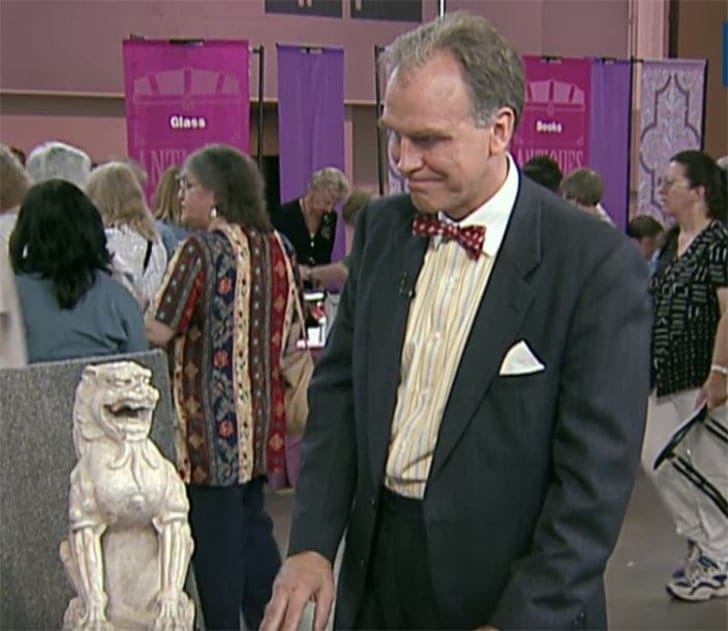
Canale recalled that soon after they had wrapped up filming the particular episode with the Lion statue, Mason just couldn’t shake off his excitement about the sculpture. Mason even described it as one of the greatest surprises he had experienced in his career.
It isn’t every day that a Tang Dynasty artifact makes its way unassumingly to an unexpected venue. Standing at 18 inches tall, Mason marveled at its size as well as the fact that it was perfect all around.
Base Impressions
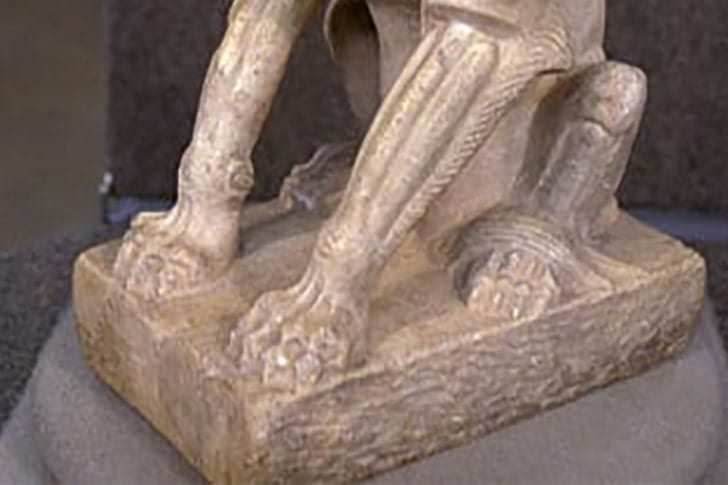
Another element about the statue that caught Mason’s attention was its base. He explained that the base was one of the aspects that backed up his belief that what they were dealing with was a Tang Dynasty piece.
Underneath it was visible signs of age preserved through the detailed chisel-work. Another element was the amount of sharp detail that went into a statue of its size, which in later works is typically observed more in the smaller sculptures.
Fine Aging
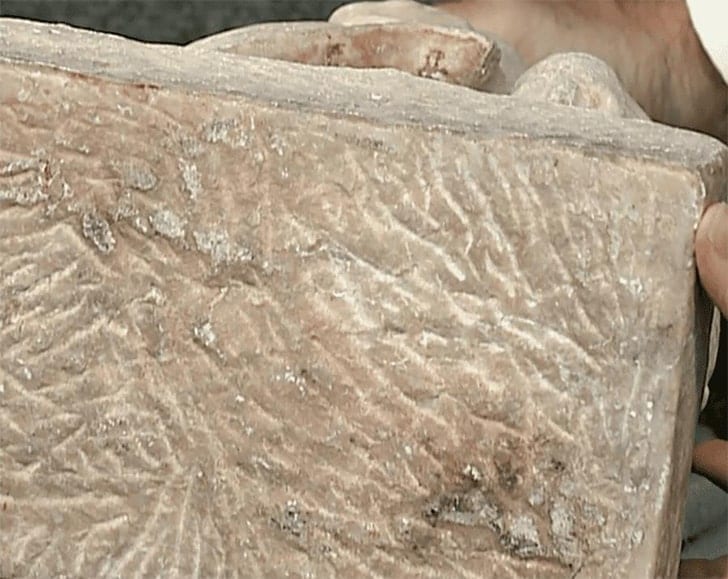
It wasn’t enough to say that the statue had held up well over time, but the intricate artistry that went into crafting the piece is worth noting. Mason was truly impressed by the amount of detail the carver had put into the sculpture, including the crisp rendering.
The details appeared as detailed as they would have immediately after leaving the carver’s workshop. It became apparent to Mason that the statue didn’t only hold intrinsic value, but it also had a high price tag attached to it.
Figuring The Numbers
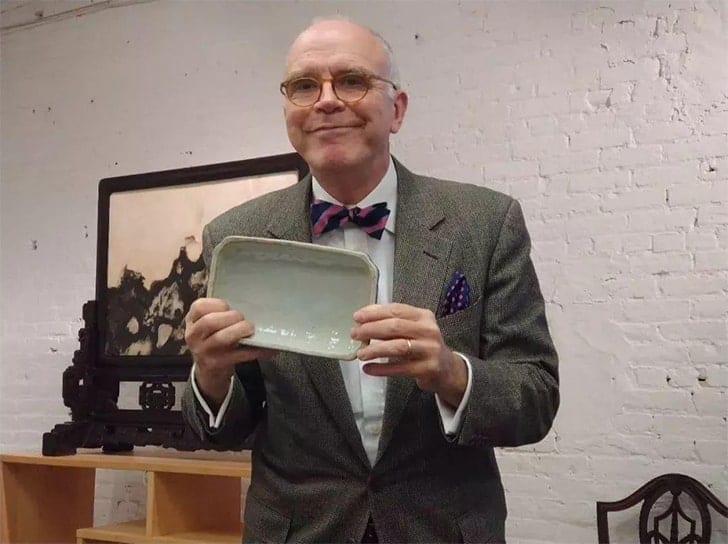
After inspecting the Lion statue, Mason assessed its value as falling anywhere between $120K to $180K. However, that was the auction value, and he figured that the insurance value was likely higher.
Mason estimated that the statue’s insurance value fell anywhere between $150K to $250K. He concluded that the statue would probably fetch the higher figure upon valuation. It came as a surprise to Mason himself, who wasn’t expecting to assess anything worth that much on the show.
Taking It In Stride

The woman who took the Lion statue in for appraisal has, for the most part, chosen to keep her identity unknown. For someone who just found out that she had grown up with an incredibly valuable piece of work, she took it all in stride when Mason announced its value.
The woman kept her cool even after taping concluded. She was probably taken aback and hadn’t imagined that the statue would cost such an astronomical amount.
The Statues Current Whereabouts
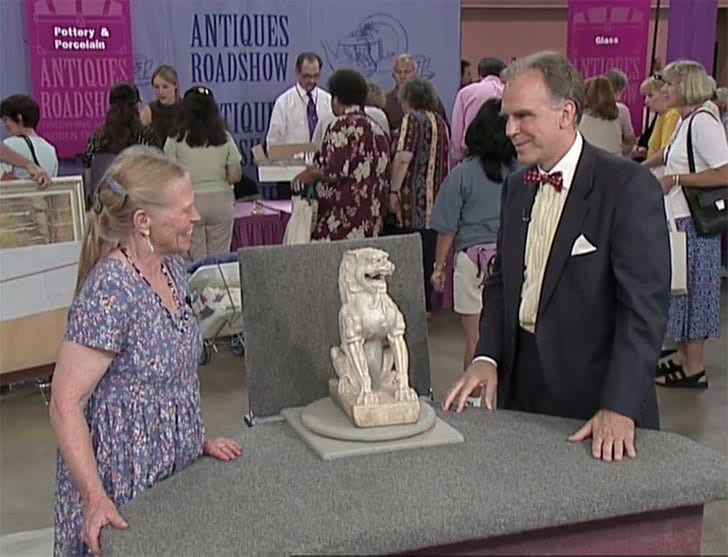
Canale and Mason bumped into each other later, and the biggest question was whether he knew the whereabouts of the Lion statue. It happened that Mason had laid eyes on the statue, not so long back.
He explained that the lady who had taken it in for assessment had held on to it. The lady could have sold it and fetched a decent amount, but it seemed like the sentimental value, and the rich history behind it proved too valuable to let go.
